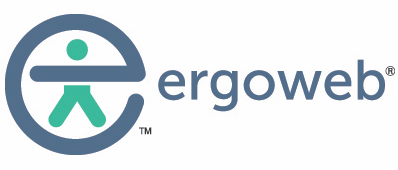 I just read about an ergonomics injury claim that spiraled out of control. In a nutshell, one employee changed another’s desk, chair and workstation setup, then that employee waited weeks for an ergonomist to revisit her desk and perform the adjustments for her. Since then, her existing injury, and the ongoing claim around it, exploded. The article didn’t share specific cost details, but from what I gathered, it had to be well over $100,000, perhaps several hundreds of thousands.
I just read about an ergonomics injury claim that spiraled out of control. In a nutshell, one employee changed another’s desk, chair and workstation setup, then that employee waited weeks for an ergonomist to revisit her desk and perform the adjustments for her. Since then, her existing injury, and the ongoing claim around it, exploded. The article didn’t share specific cost details, but from what I gathered, it had to be well over $100,000, perhaps several hundreds of thousands.
Then a potential client shared her story of a dramatic spike in ergonomics-related injury claims over the past year at her company, resulting in 100’s of thousands of dollars in losses. She attributed it to a growing atmosphere of discontent at her company.
The underlying theme to both stories is that the injuries might not be real, or at least not as bad as the claims were making them out to be:
- Are ergonomic injuries real, or are they conjured up by disgruntled, malcontent employees?
- After 30+ years of practical ergonomics practice, I can unequivocally say, “it depends.”
There’s absolute, indisputable evidence that certain physical risk factors can and regularly do cause or contribute to discomfort, pain and injury. There’s also ample evidence that psychosocial factors can play a role, and some injury claims may have their roots in discontent.
So, what’s an employer to do?
Well, we can:
- Dig in our heels and treat any and all such claims as suspect, and spend an enormous amount of time and resources in the fight to assign blame.
Or, we can:
- Recognize the complex nature of such injuries, then move on by:
- building an ergonomics process that prevents true injuries from developing;
- properly manages those that exist;
- gently minimizes and manages questionable claims;
- provides a foundation for continuous improvement and sustainability; and
- documents progress along the way.
A good ergonomics process will:
- improve business metrics across the board, including productivity and quality, by better matching work requirements to employee capabilities; and
- reduce absenteeism and turnover, improve engagement, moral and accountability.
The “dig in your heels” approach will paralyze improvement progress, neglect the root causes of true injuries, and likely cost an enormous amount in wasted effort and resources. The winning party may have bragging rights, but really, everyone’s a loser in the end.
A continuous improvement ergonomics process delivers clear, significant, measurable ROI. A dig-in-your-heels approach produces huge costs and enormous waste. Period. No ROI.
I’m confident that had the employers mentioned above been using tools like Ergoweb Enterprise™ to manage their ergonomics process, they wouldn’t be experiencing “ergonomic injury claims gone wild.” Instead, they’d be on the path to operational excellence, optimizing human and organizational performance and well-being.
Now that’s ergonomics.
This is an updated article. The original version was published on February 20, 2015.
